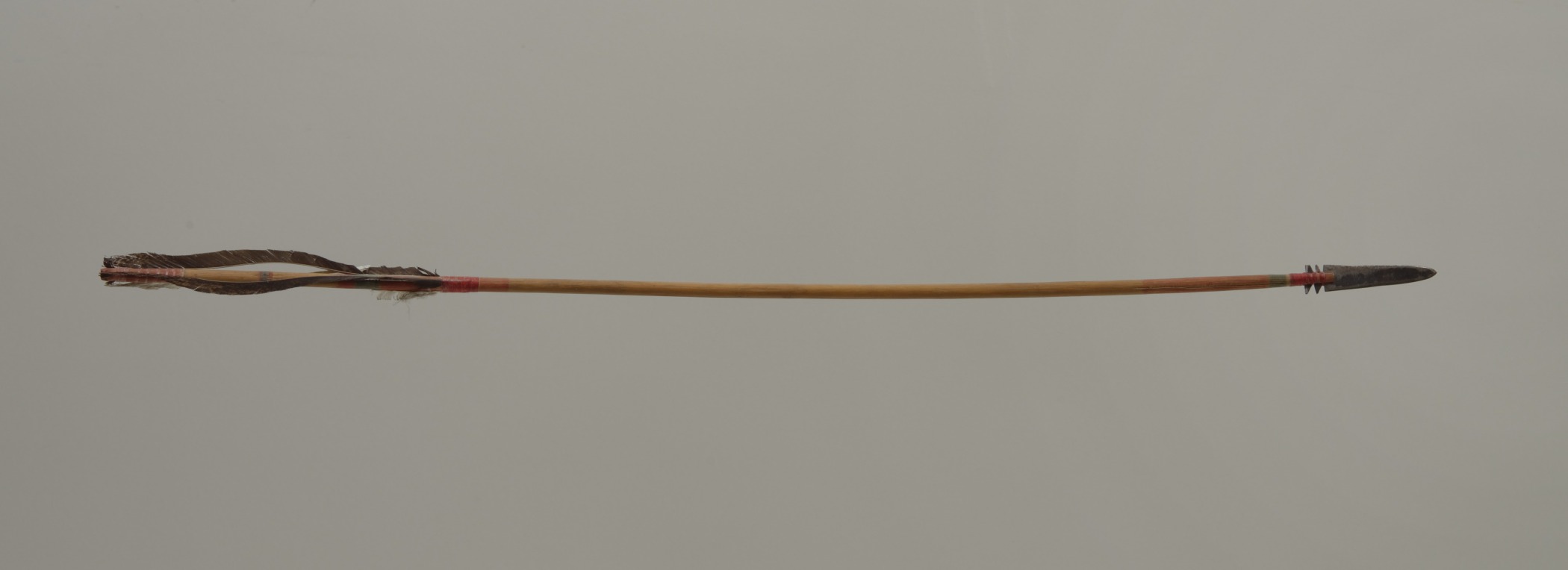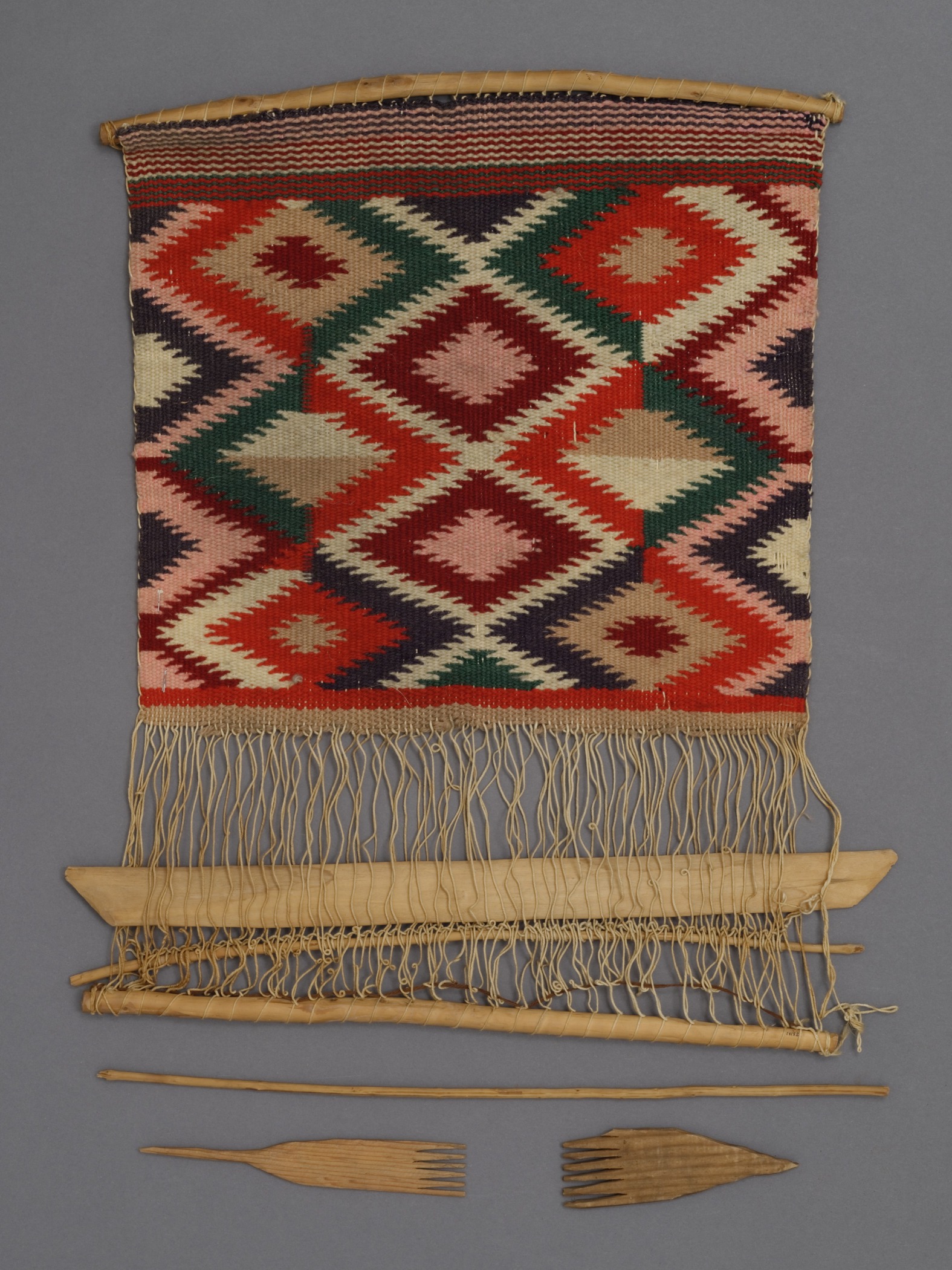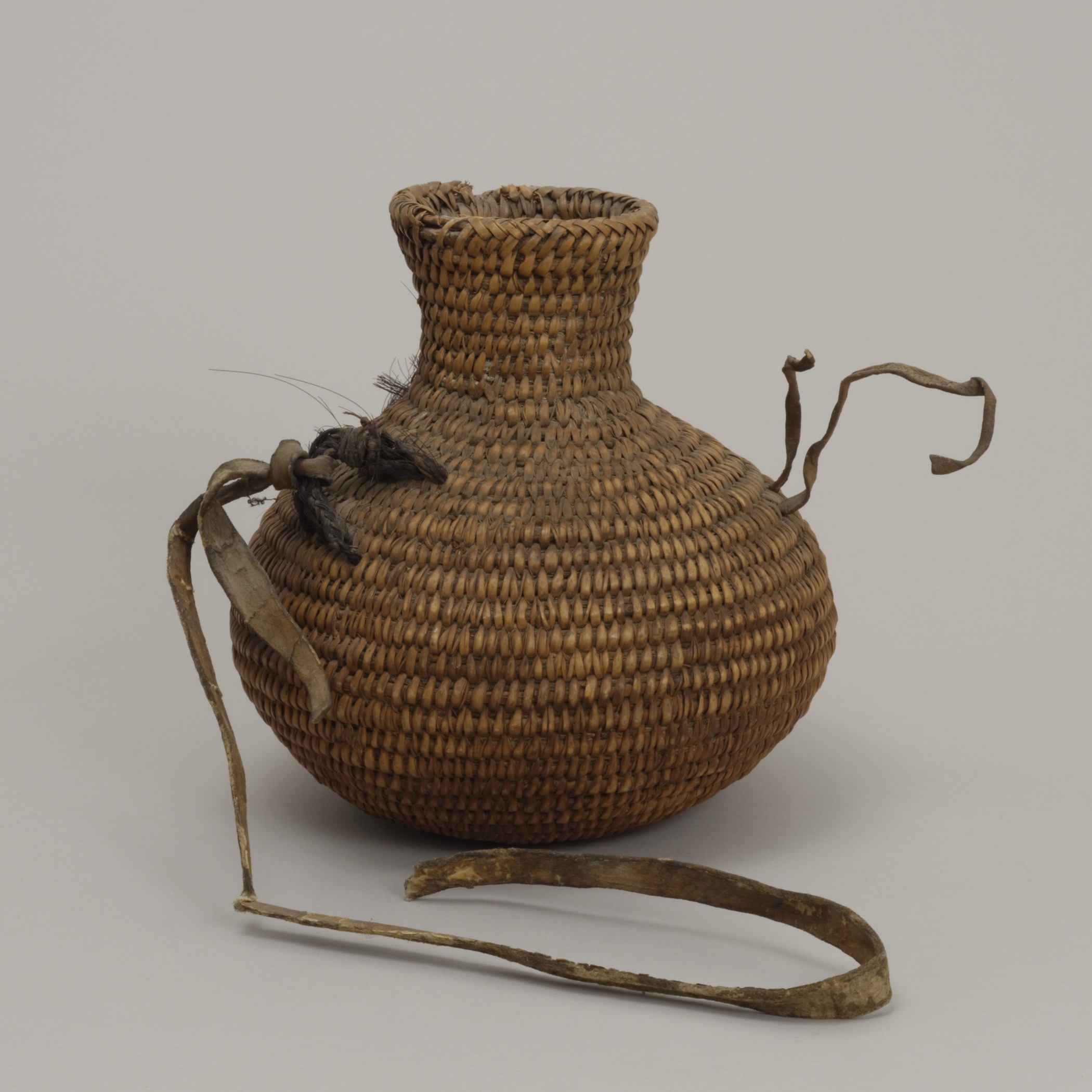Diné (Navajo)
Model loom with textile
- 1900–40
- Wood, cotton, and wool
- 8 11/16 × 8 1/16 in.
Hood Museum of Art, Dartmouth College: Gift of the Estate of Harold Goddard Rugg, Class of 1906; 157.25.14158
visibilityLook & DiscussAccording to oral tradition, Spider Woman—grandmother, teacher, helper, and creator—taught the Diné (Navajo) to build looms and weave. Diné weaving is not just a way of making textiles—it is a form of artistic expression. Diné weavers strive to create a unified whole out of contrasting colors and designs. In weaving beauty, they mimic the act of creating the world.
Weaving requires specialized tools, knowledge, and skills. It teaches patience and discipline. Before the arrival of the Spanish, Diné weavers used cotton in their weavings. After the arrival of the Spanish, they acquired churro sheep and began to use wool.
Before the weaving can begin, the sheep must be raised and shorn. The wool must then be carded, spun, and dyed.
Visitors to the Southwest were curious about the methods used to produce beautiful Diné rugs. Native craftspeople created models like this one to explain the process and to serve as souvenirs.
This model loom shows the process and tools used for weaving.
Explore the Object
A loom starts with vertical yarns, called the warp. The warp threads are tied to a frame and provide a structure for the weaving. Additional yarn is threaded horizontally through these vertical yarns to create the weaving. These horizontal yarns are called the weft.
After each weft yarn is woven through the warp, the weaver uses a comb to tap the yarn in place tightly. The number of teeth in the comb affects the tightness of the weaving. Keeping the tension uniform requires a great deal of practice and concentration.
The wooden pieces, called slats and rods, at the bottom of the loom act as a guide to the weaving. The rug pattern requires the weaver to go under certain warp threads and over others with different colors of yarn. The wooden slats and rods open up the warp threads to guide the weaver in creating her pattern.
Activity: Simple Weaving Activity
Class time: 20–30 minutes
Create a simple weaving.
learn more
In this video, Jason Curley, Diné (Navajo), Dartmouth Class of 2013, describes his experience learning to weave from his grandmother Helen Curley.





